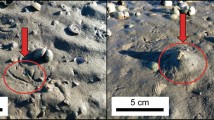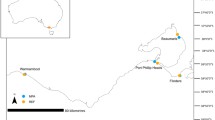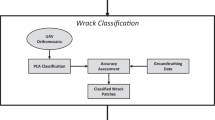Abstract
Understanding the spatial expansion process of salt marshes and quantifying the factors driving this expansion are crucial for the management and restoration of coastal wetlands. In this study, we aimed to illustrate the expansion process of Scirpus mariqueter using drone remote sensing and quantify its relationship with habitat quality. Our hypothesis was that landscape metrics could serve as valuable indicators for prioritizing habitat restoration efforts along the coast. We utilized drone remote sensing and adopted the simple Greenness Index to reflect the growth status of S. mariqueter. Using this index, we computed the standard deviation ellipse and growth center. To evaluate habitat quality, we developed a method based on our previous research and other relevant reports. We then conducted a quantitative analysis of the expansion process of S. mariqueter in areas with varying habitat quality. We found that S. mariqueter’s optimal elevation was 3.7 m, with a range of 2.5 to 4.3 m. The threshold value for soil total nitrogen was 0.3 g/kg, and the tolerance threshold for soil salinity was 2500 ppm. These three factors, elevation, soil total nitrogen, and soil salinity, collectively influenced habitat quality, with weights of 0.68, 0.23, and 0.09, respectively, as determined through geodetector analysis. During the summer, we observed a dominance of dispersal in S. mariqueter, with the species primarily spreading to areas with increased habitat quality. Patch shapes tended to be compact and regular in this season. In contrast, during the autumn, a dominance of decline was observed, with S. mariqueter mainly distributing to areas exhibiting decreased habitat quality. Patch shapes tended to be complex and irregular in the autumn season. Eventually micro-geomorphic modification and patch shape filling methods based on UAV observations are proposed to aid wetland restoration. These findings are of utmost importance for the restoration of coastal wetlands and the enhancement of ecosystem resilience.





Similar content being viewed by others
Data availability
All data could be accessed if required.
References
Chang, M., Jin, C., Lin, W., & Mao, S. (2019). Degradation situation, causes and ecological restoration in Jiangsu Yancheng coastal wetlands. Journal of Huanhai Institute of Technology (natural Science Edition), 28(01), 81–86. https://doi.org/10.3969/j.issn.1672-6685.2019.01.019
Chen, Y. (2020). Ecological restoration of Scirpus mariqueter salt marshes in the Yangtze estuary. Thesis, East China Normal University
Dale, J., Burnside, N. G., Hill-Butler, C., Berg, M. J., Strong, C. J., & Burgess, H. M. (2020). The use of unmanned aerial vehicles to determine differences in vegetation cover: A tool for monitoring coastal wetland restoration schemes. Remote Sensing, 12(24), 4022. https://doi.org/10.3390/rs12244022
Ding, W., Jiang, J., Li, X., Huang, X., Li, X., Zhou, Y., & Tang, C. (2015). Spatial distribution of species and influencing factors across salt marsh in southern Chong-ming Dongtan. Chinese Journal of Plant Ecology, 39(07), 704–716. https://doi.org/10.17521/cjpe.2015.0067
Guan, Y. (2008). Design and application of a spreading model for salt marsh vegetation based on COCA. Dissertation, East China Normal University
He, N. (2021). Ecological restoration strategy of Scirpus mariqueter in Nanhui East Beach based on 15N tracing. Thesis, Shanghai Ocean University
Hu, X. (2020). Study on eco-physiological responding of Scirpus mariqueter on coupling of salinity and flooding. Thesis, Shanghai Ocean University
Huang, H., Xu, C., & Liu, Q. X. (2022). ‘Social distancing’ between plants may amplify coastal restoration at early stage. Journal of Applied Ecology, 59(1), 188–198. https://doi.org/10.1111/1365-2664.14044
Jiang, C., Li, X., Xue, L., Yan, Z., Liang, X., & Chen, X. (2022). Pioneer salt marsh species Scirpus mariqueter disperses quicker in summer with seed contribution from current and last year. Estuarine, Coastal and Shelf Science. https://doi.org/10.1016/j.ecss.2021.107682
Keenan, T. F., Darby, B., Felts, E., Sonnentag, O., Friedl, M. A., Hufkens, K., O’Keefe, J., Klosterman, S., Munger, J. W., Toomey, M., & Richardson, A. D. (2014). Tracking forest phenology and seasonal physiology using digital repeat photography: A critical assessment. Ecological Applications, 24(6), 1478–1489. https://doi.org/10.1890/13-0652.1
Kirwan, M. L., Guntenspergen, G. R., D’Alpaos, A., Morris, J. T., Mudd, S. M., & Temmerman, S. (2010). Limits on the adaptability of coastal marshes to rising sea level. Geophysical Research Letters, 37, L23401. https://doi.org/10.1029/2010gl045489
Li, C., Zhao, M., Tao, Y., Zhong, S., Yu, K., & Fang, S. (2018). Interaction of vegetation-soil system and their response to spatial differentiation of sedi-mentation in coastal wetlands. Chinese Journal of Ecology, 37(11), 3305–3314. https://doi.org/10.13292/j.1000-4890.201811.004
Li, C. (2018). The response mechanism of Scirpus mariqueter to soil sedimentary environment in tidal flats and wetlands remediation. Thesis, Shanghai Ocean University
Lu, X., Wang, X., Yuan, L., & Peng, Z. (2023). Effects of hydrodynamics and provenance elevations on the seed dispersal in the early stage of colonization of salt marsh plant. Marine Science Bulletin, 42(1), 19–29. https://doi.org/10.11840/j.issn.1001-6392.2023.01.003
Shi, H. (2022). Effect of environmental factors on seed production and dispersal of dominant species in Chongming Dongtan. Thesis, East China Normal University
Sun, S. C., Cai, Y. L., & Liu, H. (2001). Biomass allocation of Scirpus mariqueter along an elevational gradient in a salt marsh of the Yangtse River estuary. Acta Botanica Sinica, 43(2), 178–185.
Tao, Y. (2017). Study on the construction and ecological restoration effect of Scirpus mariqueter in Nanhui Coasts. Thesis, Shanghai Ocean University
Tarnita, C. E., Bonachela, J. A., Sheffer, E., Guyton, J. A., Coverdale, T. C., Long, R. A., & Pringle, R. M. (2017). A theoretical foundation for multi-scale regular vegetation patterns. Nature, 541(7637), 398. https://doi.org/10.1038/nature20801
Wang, J., & Xu, C. (2017). Geodetector: Principle and prospective. Acta Geographica Sinica, 72(01), 116–134. https://doi.org/10.11821/dlxb201701010
Wu, M., Wu, P., He, P., He, N., Hu, Y., Wang, M., Wang, Q., Zhang, B., Zhang, S., & Fang, S. (2021). Theory of scale-dependent feedback: An experimental validation and its significance for coastal saltmarsh restoration. Science of the Total Environment, 756, 143855. https://doi.org/10.1016/j.scitotenv.2020.143855
Wu, M. (2020). Spatio-temporal process, influencing factors and self-organization behaviors of the dynamic evolution on Scirpus mariqueter wetland. Thesis, Shanghai Ocean University
Xu, Y. (2019). Species diversity and trophic structure of the fishes in the intertidal salt marsh of Nanhui Dongtan, Changjiang River Estuary. Thesis, East China Normal University
Yao, Y., Cheng, T., Sun, Z., Li, L., Chen, D., Chen, Z., Wei, J., & Guan, Q. (2022). VecLI: A framework for calculating vector landscape indices considering landscape fragmentation. Environmental Modelling & Software, 149, 105325. https://doi.org/10.1016/j.envsoft.2022.105325
Yuan, L., Chen, Y. H., Wang, H., Cao, H. B., Zhao, Z. Y., Tang, C. D., & Zhang, L. Q. (2020). Windows of opportunity for salt marsh establishment: The importance for salt marsh restoration in the Yangtze Estuary. Ecosphere, 11(7), 1–13. https://doi.org/10.1002/ecs2.3180
Zhang, Q., Zhang, Y., Sun, X., Xu, Y., & Yan, Z. (2017). Effect of nitrogen addition on growth and physiological characters of Scirpus mariqueter in the Yangtze River Estuary. Acta Agrestia Sinica, 25(01), 115–121. https://doi.org/10.11733/j.issn.1007-0435.2017.01.017
Zhang, Q., & Li, B. (2023). Field restoration practice of Scirpus mariqueter in the bird habitats of Chongming Dongtan Wetland, China. Chinese Journal of Applied Ecology, 1–12. https://link.cnki.net/urlid/21.1253.Q.20230809.1444.002
Zhang, J. (2021). Natural-based restoration techniques for Scirpus mariqueter marshes. Thesis, East China Normal University
Zhao, L., & Zhao, Z. (2014). Projecting the spatial variation of economic based on the specific ellipses in China on the specific ellip. Scientia Geographica Sinica, 34(08), 979–986. https://doi.org/10.13249/j.cnki.sgs.2014.08.015
Zhao, L. (2020). Self-organized spatial patterning in intertidal salt marshes and its ecosystem functioning. Dissertation, East China Normal University
Zhu, X. D., Meng, L. X., Zhang, Y. H., Weng, Q. H., & Morris, J. (2019). Tidal and meteorological influences on the growth of invasive Spartina alterniflora: Evidence from UAV remote sensing. Remote Sensing, 11(10), 1208. https://doi.org/10.3390/rs11101208
Funding
This work is sponsored by the National Key R&D Program of China (2017YFC0506002), the Natural Science Foundation of China (31872695), and funding from the Oceanography Administration of Shanghai (HHK-2022–03).
Author information
Authors and Affiliations
Contributions
All authors contributed to the study’s conception and design. Guoning Gong conducted the data analysis, software operation, and wrote the original draft of the manuscript. Shubo Fang provided guidance and made revisions to the original draft, while also providing financial support. Material preparations were performed by Meihua Gao and Bolun Zhang. Data collections were performed by Shengle Zhang, Gaoru Li, and Li Yaru. Peimin He, Matthew J. Deitch, and Tesfay G. Gebremicael provided ideas for the draft and revised the manuscript. All authors commented on previous versions of the manuscript. All authors read and approved the final manuscript.
Corresponding author
Ethics declarations
Ethical responsibilities of authors
All authors have read, understood, and have complied as applicable with the statement on “Ethical responsibilities of authors” as found in the Instructions for Authors.
Competing interests
The authors declare no competing interests.
Additional information
Publisher's Note
Springer Nature remains neutral with regard to jurisdictional claims in published maps and institutional affiliations.
Rights and permissions
Springer Nature or its licensor (e.g. a society or other partner) holds exclusive rights to this article under a publishing agreement with the author(s) or other rightsholder(s); author self-archiving of the accepted manuscript version of this article is solely governed by the terms of such publishing agreement and applicable law.
About this article
Cite this article
Gong, G., Fang, S., Gao, M. et al. The spatial pattern of Scirpus mariqueter expansion and the associated mechanism of self-organization using unmanned aerial vehicles and its significance for coastal wetland restoration. Environ Monit Assess 195, 1537 (2023). https://doi.org/10.1007/s10661-023-12103-x
Received:
Accepted:
Published:
DOI: https://doi.org/10.1007/s10661-023-12103-x




